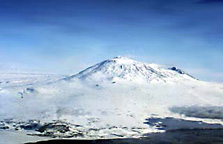The Convention on the Conservation of Antarctic Marine Living Resources came into force in 1982, as part of the Antarctic Treaty System, in pursuance of the provisions of Article IX of the Treaty.
It was established mainly in response to concerns that an increase in krill catches in the Southern Ocean could have a serious effect on populations of krill and other marine life; particularly on birds, seals and fish, which mainly depend on krill for food.

The aim of the Convention is to conserve marine life of the Southern Ocean. However this does not exclude harvesting carried out in a rational manner.
Achievement of this aim is far from simple – it requires the collection of large quantities of information and the development of appropriate scientific and analytical techniques.
This approach is complemented by the need to take into account ecological links between species and ‘natural’ as opposed to ‘human-induced’ variability – the ‘ecosystem approach’.
Finally, conservation measures adopted by CCAMLR are based on scientific advice and require enforcement to be effective.
As resources assume growing economic importance, the temptation to work outside conservation or regulatory measures increases, leading to ‘illegal, unregulated and unreported (IUU) fishing’.
The vast
size and inhospitable conditions of the Southern Ocean make it extremely
difficult for Member States to enforce or police CCAMLR measures to combat
IUU fishing.
The Convention establishes a Commission to manage the marine living
resources of the area for which it is responsible.
The resources specifically exclude whales and seals, which are the subject of other conventions – namely, the International Convention for the Regulation of Whaling and the Convention for the Conservation of Antarctic Seals.
Nevertheless, the Commission cooperates closely with the institutions implementing these conventions.

Commonly known in English by its initials, CCAMLR (pronounced ‘kammelar’), the Commission is provided with a number of tools, notably:
• the Scientific Committee – to provide scientific advice;
• regular meetings;
• the Secretariat – to provide administrative support; and
• an annual budget.
The following texts describe where the Commission and Scientific Committee stand some two decades after the Convention’s entry into force:
CCAMLR's Management of the Antarctic
Understanding CCAMLR's Approach to Management
Photographs are courtesy of Dr D.G.M. Miller and Dr K.-H. Kock.